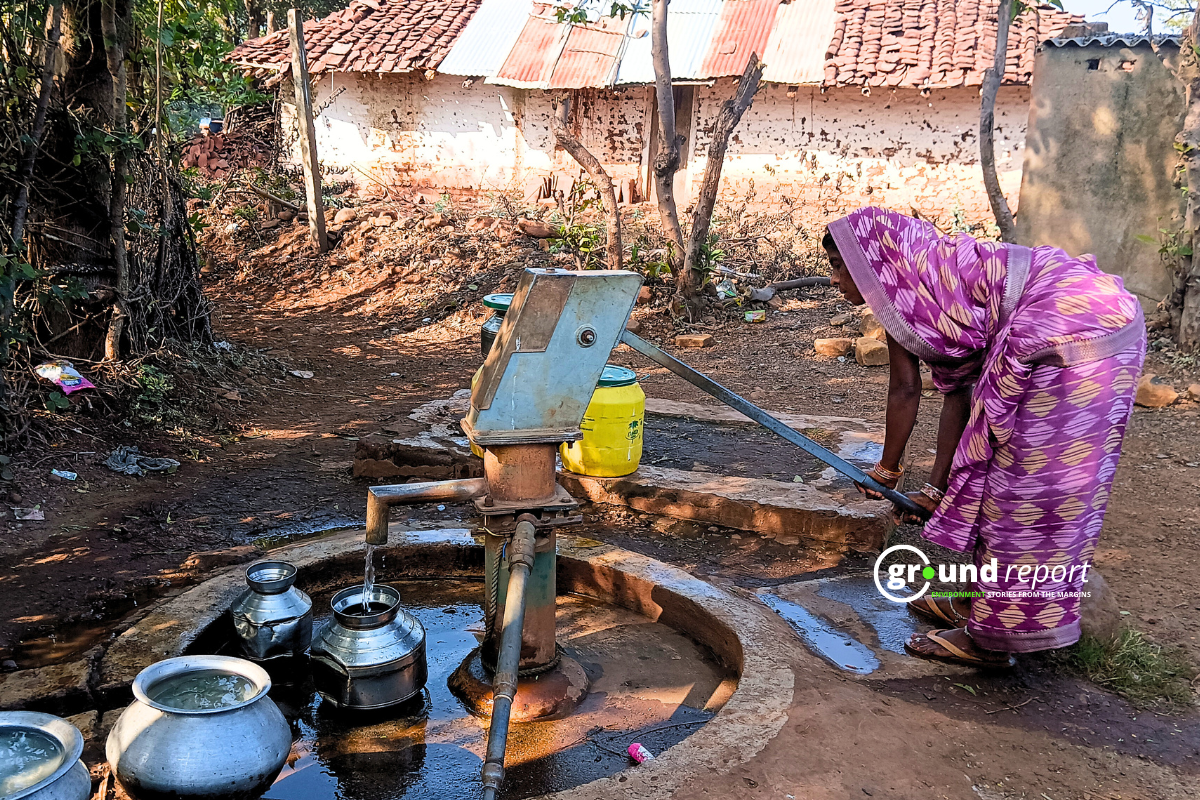At Bhopal’s Barkhedi Dhobi Ghat, Govind’s daily routine reflects a wider environmental concern. As he measures out 3-5 kilograms of detergent and bleach to wash the day’s clothes, the chemical-laden water flows directly into nearby drains—a scene repeated countless times across India’s washing ghats.
This local practice mirrors a larger urban challenge: the widespread use of cleaning agents in both households and industries. From laundry detergents and personal care products to industrial cleaners, these substances share a common ingredient: surfactants. These chemical compounds, while effective for cleaning, pose a significant environmental threat and create complications for municipal sewage treatment facilities.
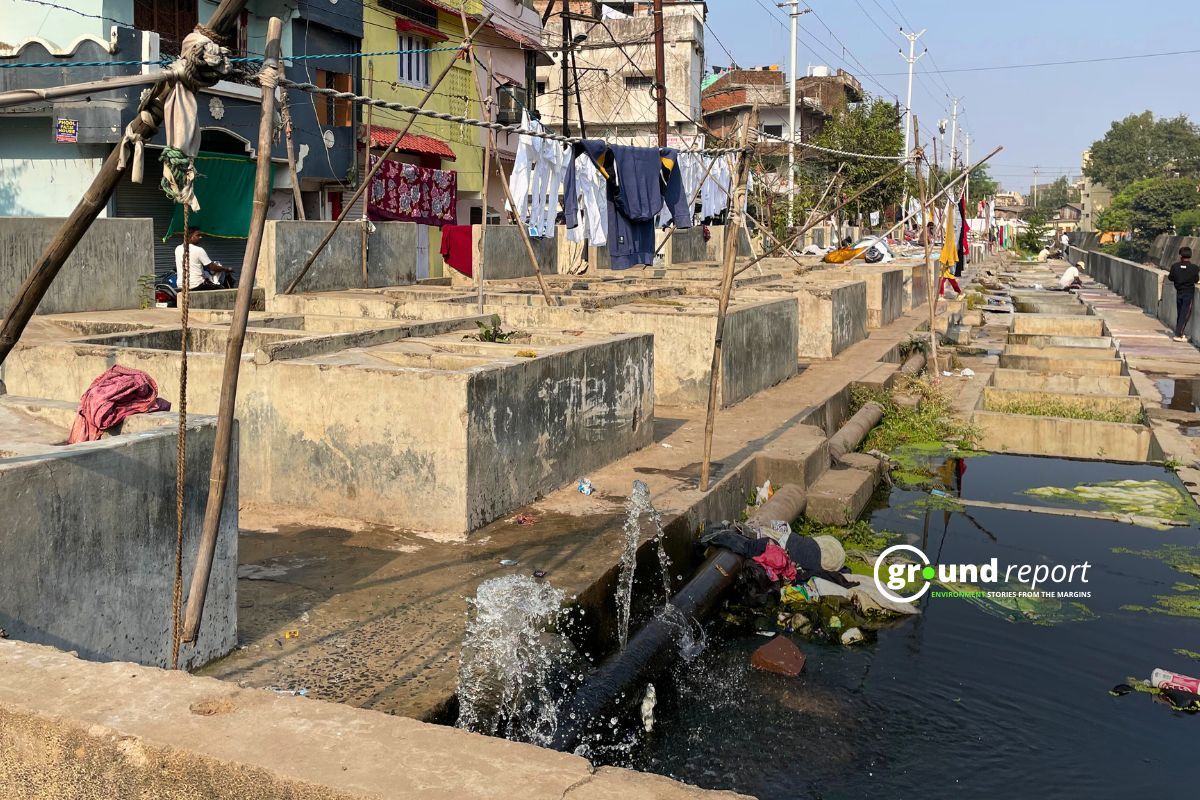
The seemingly harmless act of washing, whether at a traditional dhobi ghat or in modern homes and factories, introduces substantial amounts of these persistent chemicals into our water systems. The impact extends far beyond the initial disposal point, challenging both environmental sustainability and urban infrastructure.
MPPCB’s study in Bhopal
In 2022–23, the Madhya Pradesh Pollution Control Board (MPPCB) conducted a study examining surfactant levels in Bhopal’s domestic sewage. The study looked at water samples from eight major drains and four sewage treatment plants across the city. It found high levels of surfactants in both raw and treated sewage water, as well as high levels of other physical and chemical factors.
“This pioneering study, the first of its kind in Madhya Pradesh, will inform strict regulatory policies on surfactant use,” explains MPPCB scientist Alok Saxena.
He emphasizes that surfactants pose serious risks to the health of microorganisms, plants, animals, and humans in both aquatic and terrestrial environments. “The need to regulate surfactant use within permissible limits has become critical,” he adds.
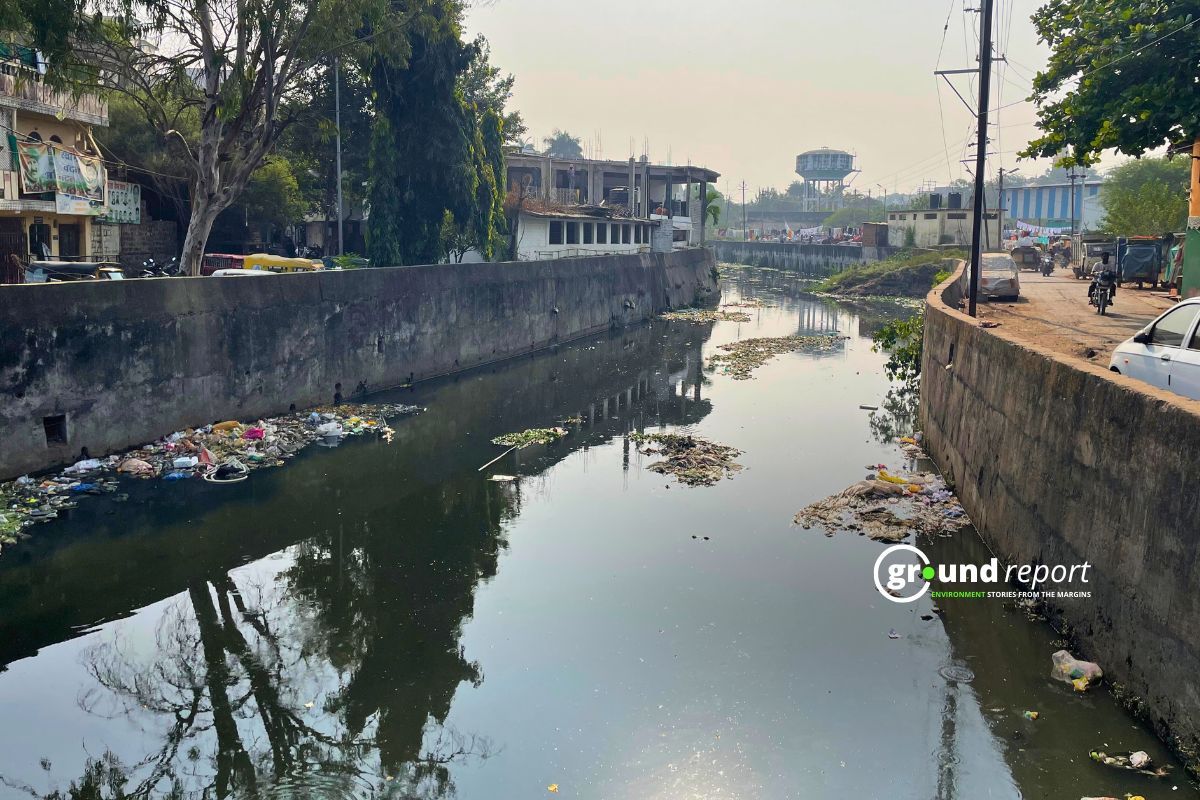
While bioremediation has been the traditional approach to removing surfactants from environmental matrices over recent decades, current treatment methods span physical, chemical, biological, and membrane techniques. However, conventional approaches like gravity disposal and biological treatment show limitations, particularly when dealing with high pollutant concentrations. These methods often fail to completely eliminate both anionic surfactants and organic matter.
The effectiveness of treatment solutions depends on multiple factors, including operational efficiency, processing time, waste characteristics, and energy consumption. Given these complexities and the growing scale of surfactant pollution, there’s an urgent need for comprehensive research and innovative solutions to address this environmental challenge effectively.
Ineffectiveness of sewage treatment plants
Research published in the Journal of Applied Microbiology by Jayati Arora and Anuj Ranjan (May 2022) highlights the unavoidable presence of surfactants in our environment. These surface-active agents, predominantly found in cleaning products and personal care items, pose significant environmental risks, particularly through water contamination. Anionic surfactants are the most common type. Anionic surfactants produce foamy water and have the ability to penetrate cell membranes, posing a hazard to aquatic life and potentially causing damage to fish gills and blindness. They also lower the amount of oxygen in water.
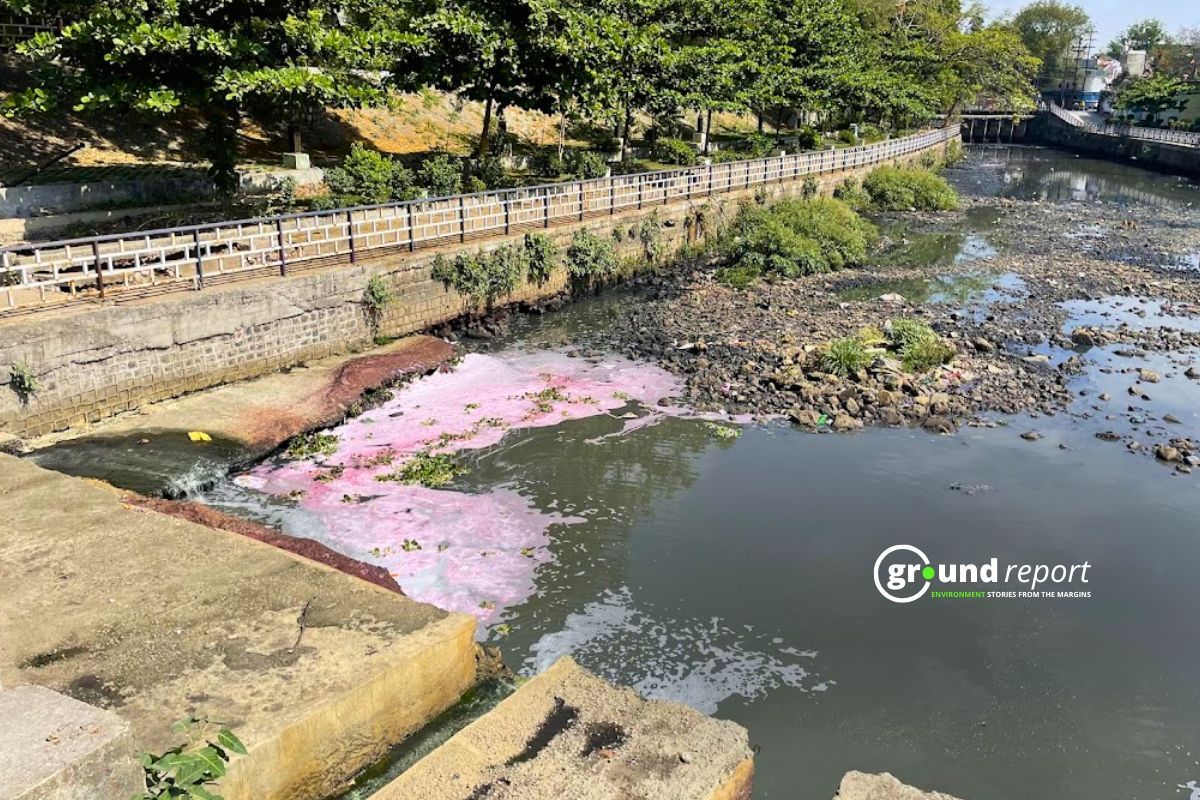
A recent Ground Report investigation in Indore revealed visible foaming in treated water from a sewage treatment plant near the Municipal Corporation office. When questioned, District Panchayat CEO Siddharth Jain maintained the water was fully treated. However, this foaming phenomenon aligns with MPPCB’s findings in Bhopal, where high surfactant concentrations persisted in treated water from four sewage treatment plants.
Indore’s largest facility, the 245 MLD sewage plant in Kabitkhedi, employs SBR (Sequential Batch Reactor) with BNR (Bio-Nutirent Removal) technology. Yet, according to a 2019 study in the Journal of Environmental Health Science and Engineering examining Polish domestic wastewater treatment plants, SBR technology’s removal efficiency of organic compounds, expressed as COD and BOD5 (chemical oxygen demand and biochemical oxygen demand), reached the threshold of 90%, but when it comes to the removal of non-ionic surfactants, the result was only 56%.
Non-ionic surfactants don’t create the characteristic bubbles and foam associated with laundry and dishwashing products. This distinct chemical property makes them less visibly detectable in water systems.
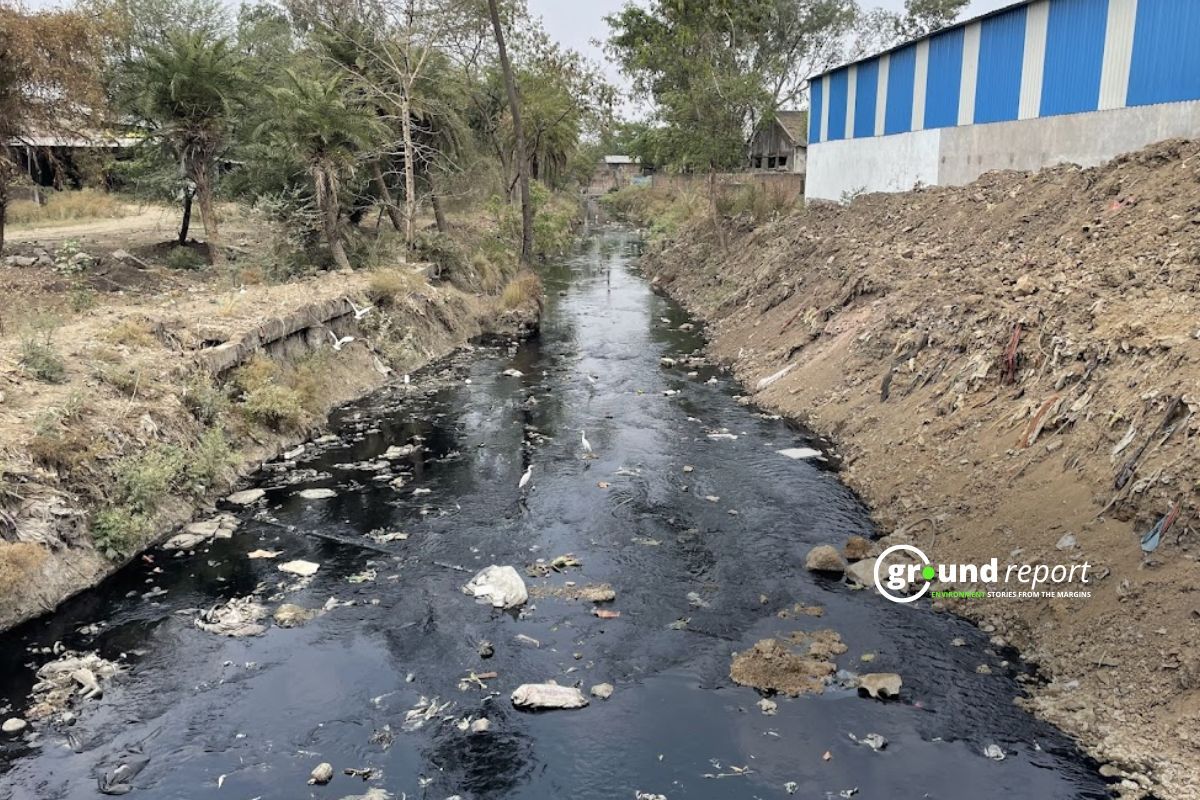
This inefficiency in surfactant removal from India’s expensive sewage treatment infrastructure raises serious concerns. Even trace amounts of these compounds can significantly impact aquatic ecosystems and soil health, suggesting an urgent need for enhanced treatment solutions and stricter regulations.
The scale of India’s surfactant crisis becomes more apparent when viewed through the lens of the nation’s sewage treatment capacity. According to recent Central Pollution Control Board (CPCB) data, urban India generates a staggering 72,368 million litres of sewage daily yet treats only 20,236 million litres—a mere 28% of the total volume.
Growing surfactant market in India
India’s surfactant market, valued at USD 2.48 billion in FY23, is projected to expand at a robust CAGR (Compound annual growth rate) of 9.3% through 2031, driven by rising retail demand and supportive government policies. However, this growth presents an environmental paradox.
Jhag in Delhi’s Yamuna
The surfactant crisis is particularly visible in India’s urban waterways, with Delhi’s Yamuna River serving as a stark example. Each year, dramatic images of foam-covered river surfaces make headlines, highlighting the environmental toll of unchecked chemical pollution.
According to an IIT Kanpur study, this persistent foaming phenomenon stems from a lethal combination: elevated pollutant levels and untreated sewage discharge. The primary culprits are phosphate-laden detergents and surfactants from residential and industrial waste.
Some environmental factors also play an important role in the formation of foam in Yamuna, such as the warm temperature of water, which increases the activity of surfactants—these are compounds that reduce the surface tension of water, which promotes the formation of foam. In the dry season, when the flow of water reduces and the water starts becoming stagnant, froth starts forming in the stagnant water. These chemicals fundamentally alter the river’s surface tension properties, creating the characteristic foam blankets that have become an annual reminder of India’s growing water pollution challenge.
Green Surfactant
Hope emerges in the form of biosurfactants, an eco-friendly alternative to traditional chemical surfactants. These ‘green surfactants,’ primarily composed of glycolipids derived entirely from renewable resources, offer a promising solution to the growing surfactant crisis. Their key advantages lie in their high biodegradability and minimal toxicity profiles, making them significantly less harmful to aquatic ecosystems. However, despite their environmental benefits, widespread adoption remains limited due to higher production costs and limited commercial availability.
Conclusion
Most Indians remain unaware of their daily surfactant consumption through household products, leading to an invisible but mounting environmental crisis. As these chemicals and their partial biodegradation products steadily seep into wastewater and groundwater systems, the environmental burden grows. The rising prevalence of non-ionic surfactants is particularly concerning, highlighting an urgent need for both public awareness and innovative solutions.
This challenge demands a three-pronged approach: enhanced public education about surfactant use, improved wastewater treatment technologies, and stronger regulatory frameworks to monitor and control these pervasive pollutants. The future of India’s water quality may well depend on how we balance consumer convenience with environmental responsibility.
Support us to keep independent environmental journalism alive in India.
Keep Reading
From pollution to preservation: Reviving Indore’s Annapurna Lake
Sirpur Wetland: Illegal buildings razed, fight for STP removal continues
Costliest water from Narmada is putting financial burden on Indore
5 projects of Modi government that will cause irreversible impact on environment
Follow Ground Report on X, Instagram and Facebook for environmental and underreported stories from the margins. Give us feedback on our email id greport2018@gmail.com.
Don’t forget to Subscribe to our weekly newsletter, Join our community on WhatsApp, and Follow our YouTube Channel for video stories.


